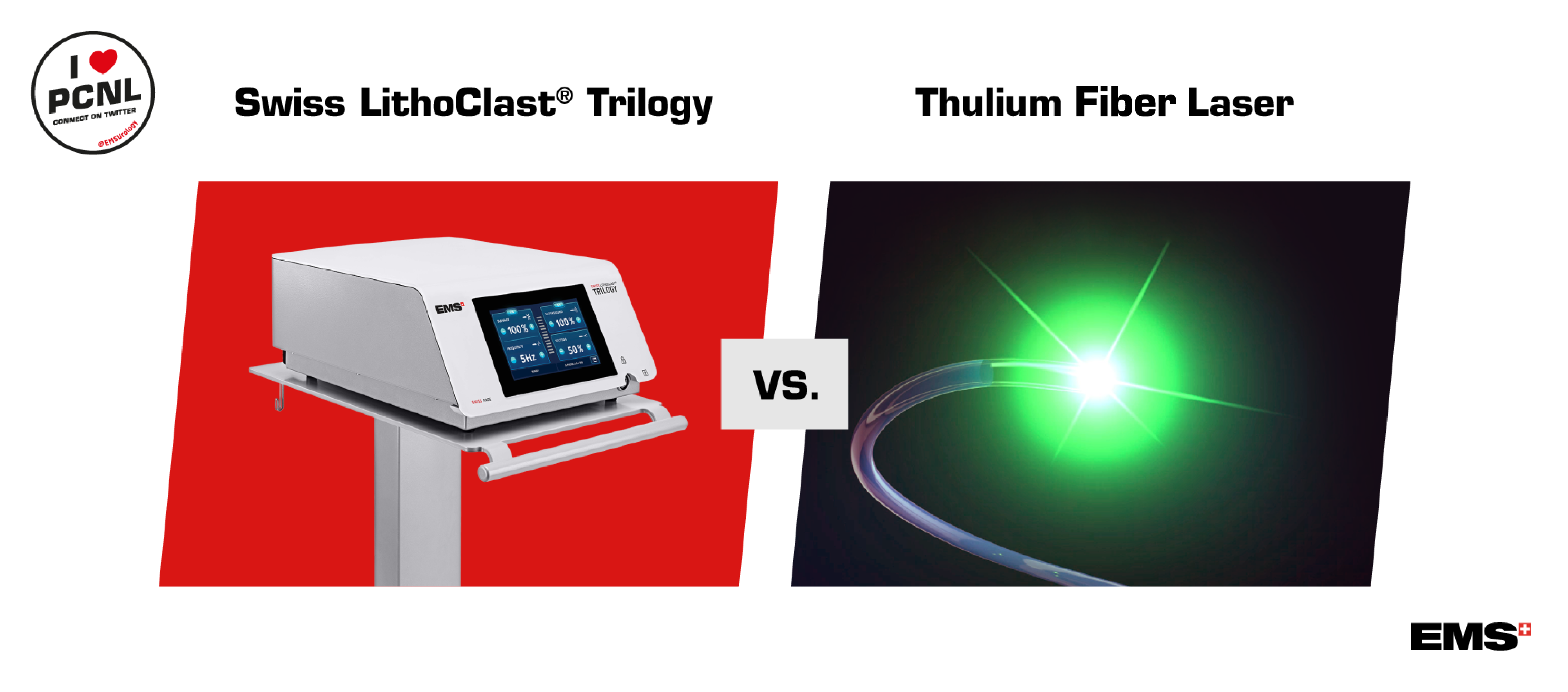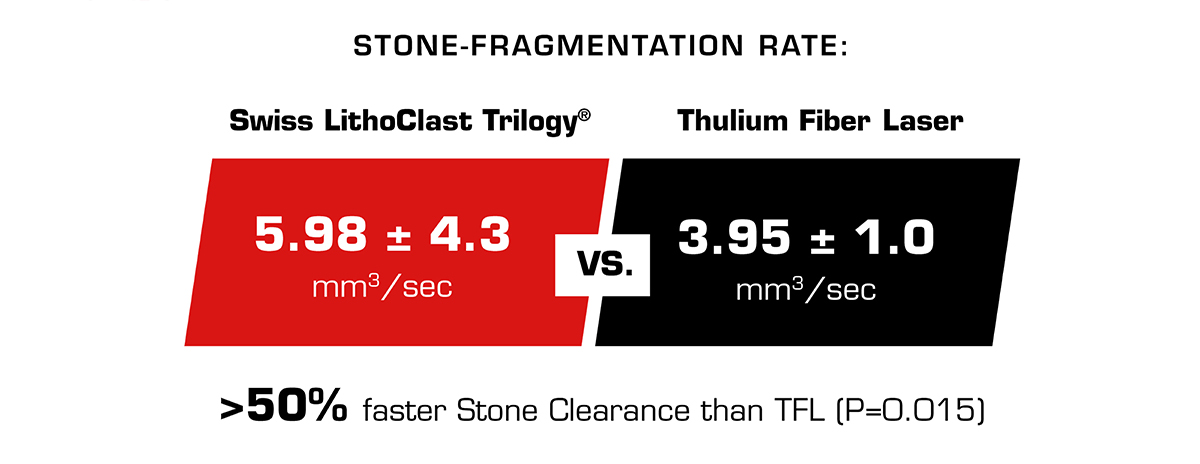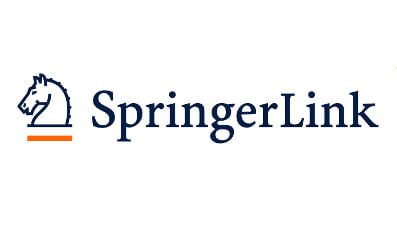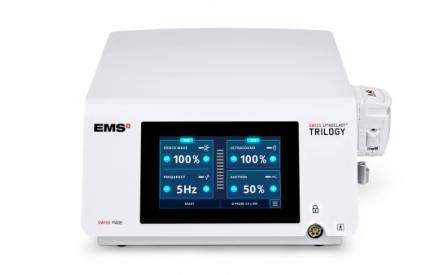
A prospective comparative study of mini‑PCNL using Swiss LithoClast® Trilogy or Thulium Fiber Laser with suction
Abhijit Patil, Rohan Sharma, Darshit Shah, Ankit Gupta1, Abhishek Singh, Arvind Ganpule, Ravindra Sabnis, Mahesh Desai, Department of Urology, Muljibhai Patel Urological Hospital, Nadiad, India “A prospective comparative study of mini-PCNL using Trilogy® or Thulium Fiber Laser with suction.” World Journal of Urology, 10.1007/s00345-021-03881-5. 28 Nov. 2021.
Find the original article here.
Swiss LithoClast® Trilogy had a significantly better stone fragmentation rate than TFL in managing renal stones with a higher stone-free rate on post-operative day 1.

Background
To date, percutaneous nephrolithotomy (PCNL) represents a gold standard for the treatment of large renal stones. In the majority of cases, this procedure is conducted using either high power lasers or advanced lithotripters combining pneumatic impact and ultrasonic energy. One such technology is the Swiss LithoClast® Trilogy which disintegrates stones with a dual-energy probe and evacuates fragments with inbuilt, simultaneous suction. Recently introduced Thulium Fiber Laser (TFL) also represents a highly effective method of renal stones fragmentation and dusting with a confirmed safety profile. With the addition of suction to the nephroscopy sheath, stone clearance efficiency of laser systems may be improved.This prospective study aimed to compare mini-PCNL with the Swiss LithoClast® Trilogy and TFL with suction in terms of stone clearance efficiency.
Methods
Data from 60 patients were prospectively collected and included in the analyses. A total of 30 individuals underwent mini-PCNL with the use of Swiss LithoClast® Trilogy (ø1.9 mm probe) and another 30 with the use of 60W SuperPulse Thulium Fiber Laser (400 µm fiber). In the Swiss LithoClast® Trilogy arm, A 14 Fr Wolf™ nephroscope was used with 18-Fr amplatz sheath while in the TFL arm, a 12-Fr Karl Storz™ nephroscope with an 18-Fr nephroscopy sheath (Shah Superperc sheath) was used. All enrolled patients underwent pre-operative CT urography imaging to assess the stone size, volume, and density of stones in Hounsfield units.
Objectives
- Lasing time - the total duration of laser-active time.
- Probe activation time - total duration of the lithotripsy probe activation.
- Stone fragmentation rate - stone volume divided by the lasing or probe activation time.
- Stone clearance - assessed on the first post-operative day and after 1-month follow-up.
Results
Pre-operative stone measurements*
|
Swiss LithoClast® Trilogy |
Thulium Fiber Laser 400 µm fiber |
|
|---|---|---|
| Number of patients | 30 | 30 |
| Stone size [mm] | 27.60 ± 10.17 | 22.04 ± 9.69 |
| Stone volume [mm3] | 3718.92 ± 3938.72 | 3425.91 ± 3096.11 |
| Stone density [HU] | 1172.97 ± 313.52 | 1308.93 ± 333.97 |
*There were no statistically significant differences in pre-operative parameters between the study subgroups.
Intra- and postoperative parameters

| Swiss LithoClast® Trilogy ø1.9 mm probe |
Thulium Fiber Laser 400 µm fiber |
|
|---|---|---|
| Treatment time [min] | 32.48 ± 15.39 | 28.63 ± 18.56 |
| Stone fragmentation rate [mm3/min] | 5.98 ± 4.25 | 3.95 ± 1.00 |
| Hemoglobin drop [g/dL] | 1.19 ± 0.76 | 0.99 ± 0.74 |
| Stone free rate at 48 h [%] | 96.6% | 76.6% |
| Post-operative complications [N] | 3 (UTI requiring antibiotics) | 2 (UTI requiring antibiotics) |
- Swiss LithoClast® Trilogy achieved >50% faster stone clearance than Thulium Fiber Laser (P=0.015)!
- Swiss LithoClast® Trilogy had a 26% higher Stone Free Rate at 48h post-op. Both devices had complete stone clearance at a 1-month follow-up!
Conclusion
Swiss LithoClast® Trilogy had a significantly better stone fragmentation rate than TFL in managing renal stones with a higher stone-free rate on post-operative day 1.


